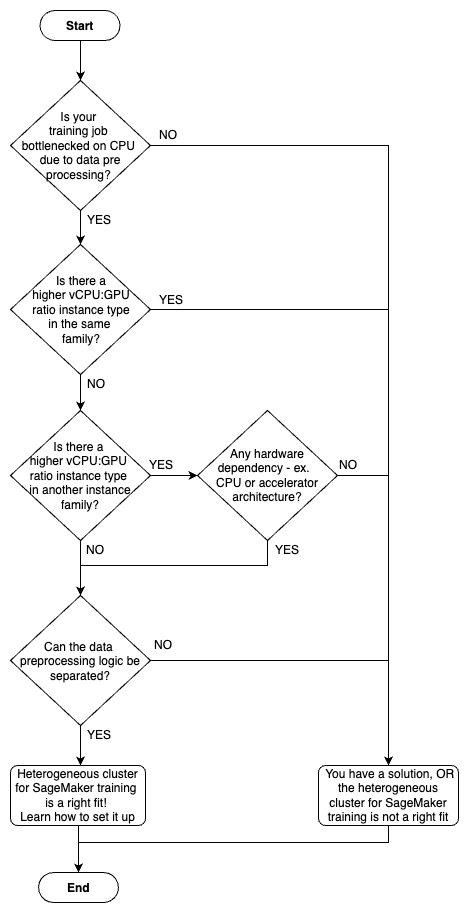Summary
We are bringing a number of improvements to the current PyTorch libraries, alongside the PyTorch 1.13 release. These updates demonstrate our focus on developing common and extensible APIs across all domains to make it easier for our community to build ecosystem projects on PyTorch.
Along with 1.13, we are releasing updates to the PyTorch Libraries, please find them below.
TorchAudio
(Beta) Hybrid Demucs Model and Pipeline
Hybrid Demucs is a music source separation model that uses both spectrogram and time domain features. It has demonstrated state-of-the-art performance in the Sony® Music DeMixing Challenge. (citation: https://arxiv.org/abs/2111.03600)
The TorchAudio v0.13 release includes the following features
- MUSDB_HQ Dataset, which is used in Hybrid Demucs training (docs)
- Hybrid Demucs model architecture (docs)
- Three factory functions suitable for different sample rate ranges
- Pre-trained pipelines (docs)
- SDR Results of pre-trained pipelines on MUSDB_HQ test set
- Tutorial that steps through music source separation using the pretrained pipeline (docs)
| Pipeline | All | Drums | Bass | Other | Vocals |
|---|---|---|---|---|---|
| HDEMUCS_HIGH_MUSDB* | 6.42 | 7.76 | 6.51 | 4.47 | 6.93 |
| HDEMUCS_HIGH_MUSDB_PLUS** | 9.37 | 11.38 | 10.53 | 7.24 | 8.32 |
* Trained on the training data of MUSDB-HQ dataset.
** Trained on both training and test sets of MUSDB-HQ and 150 extra songs from an internal database that were specifically produced for Meta.
from torchaudio.pipelines import HDEMUCS_HIGH_MUSDB_PLUS
bundle = HDEMUCS_HIGH_MUSDB_PLUS
model = bundle.get_model()
sources_list = model.sources
mixture, samplerate = torchaudio.load(“song.wav”)
sources = model(mixture)
audios = dict(zip(sources_list, sources)
Special thanks to Alexandre Defossez for the guidance.
(Beta) Datasets and Metadata Mode for SUPERB Benchmark
TorchAudio adds support for various audio-related datasets used in downstream tasks for benchmarking self-supervised learning models. With the addition of several new datasets, there is now support for the downstream tasks in version 1 of the SUPERB benchmark, which can be found in the s3prl repository.
For these datasets, we also add metadata support through a get_metadata function, enabling faster dataset iteration or preprocessing without the need to load waveforms. The function returns the same features as __getitem__, except it returns the relative waveform path rather than the loaded waveform.
Datasets with metadata functionality
- LIBRISPEECH (docs)
- LibriMix (docs)
- QUESST14 (docs)
- SPEECHCOMMANDS (docs)
- (new) FluentSpeechCommands (docs)
- (new) Snips (docs)
- (new) IEMOCAP (docs)
- (new) VoxCeleb1 (Identification, Verification)
(Beta) Custom Language Model support in CTC Beam Search Decoding
TorchAudio released a CTC beam search decoder in release 0.12, with KenLM language model support. This release, there is added functionality for creating custom Python language models that are compatible with the decoder, using the torchaudio.models.decoder.CTCDecoderLM wrapper.
For more information on using a custom language model, please refer to the documentation and tutorial.
(Beta) StreamWriter
torchaudio.io.StreamWriter is a class for encoding media including audio and video. This can handle a wide variety of codecs, chunk-by-chunk encoding and GPU encoding.
writer = StreamWriter("example.mp4")
writer.add_audio_stream(
sample_rate=16_000,
num_channels=2,
)
writer.add_video_stream(
frame_rate=30,
height=96,
width=128,
format="rgb24",
)
with writer.open():
writer.write_audio_chunk(0, audio)
writer.write_video_chunk(1, video)
For more information, refer to the documentation and the following tutorials
- StreamWriter Basic Usage
- StreamWriter Advanced Usage
- Hardware-Accelerated Video Decoding and Encoding
TorchData
For a complete list of changes and new features, please visit our repository’s 0.5.0 release note.
(Prototype) DataLoader2
DataLoader2 was introduced in the last release to execute DataPipe graph, with support for dynamic sharding for multi-process/distributed data loading, multiple backend ReadingServices, and DataPipe graph in-place modification (e.g. shuffle control).
In this release, we further consolidated the API for DataLoader2 and a detailed documentation is now available here. We continue to welcome early adopters and feedback, as well as potential contributors. If you are interested in trying it out, we encourage you to install the nightly version of TorchData.
(Beta) Data Loading from Cloud Service Providers
We extended our support to load data from additional cloud storage providers via DataPipes, now covering AWS, Google Cloud Storage, and Azure. A tutorial is also available. We are open to feedback and feature requests.
We also performed a simple benchmark, comparing the performance of data loading from AWS S3 and attached volume on an AWS EC2 instance. The results are visible here.
torch::deploy (Beta)
torch::deploy is now in Beta! torch::deploy is a C++ library for Linux based operating systems that allows you to run multiple Python interpreters in a single process. You can run your existing eager PyTorch models without any changes for production inference use cases. Highlights include:
- Existing models work out of the box–no need to modify your python code to support tracing.
- Full support for your existing Python environment including C extensions.
- No need to cross process boundaries to load balance in multi-GPU serving environments.
- Model weight can be shared between multiple Python interpreters.
- A vastly improved installation and setup process.
torch::deploy::InterpreterManager manager(4);
// access one of the 4 interpreters
auto I = manager.acquireOne();
// run infer from your_model.py
I.global("your_model", "infer")({at::randn({10, 240, 320})});
Learn more here.
(Beta) CUDA/ROCm/CPU Backends
torch::deploy now links against standard PyTorch Python distributions so all accelerators that PyTorch core supports such as CUDA and AMD/HIP work out of the box.
- Can install any device variant of PyTorch via pip/conda like normal.
- https://pytorch.org/get-started/locally/
(Prototype) aarch64/arm64 support
torch::deploy now has basic support for aarch64 Linux systems.
- We’re looking to gather feedback on it and learn more about arm use cases for eager PyTorch models.
- Learn more / share your use case at https://github.com/pytorch/multipy/issues/64
TorchEval
(Prototype) Introducing Native Metrics Support for PyTorch
TorchEval is a library built for users who want highly performant implementations of common metrics to evaluate machine learning models. It also provides an easy to use interface for building custom metrics with the same toolkit. Building your metrics with TorchEval makes running distributed training loops with torch.distributed a breeze.
Learn more with our docs, see our examples, or check out our GitHub repo.
TorchMultimodal Release (Beta)
Please watch for upcoming blogs in early November that will introduce TorchMultimodal, a PyTorch domain library for training SoTA multi-task multimodal models at scale, in more details; in the meantime, play around with the library and models through our tutorial.
TorchRec
(Prototype) Simplified Optimizer Fusion APIs
We’ve provided a simplified and more intuitive API for setting fused optimizer settings via apply_optimizer_in_backward. This new approach enables the ability to specify optimizer settings on a per-parameter basis and sharded modules will configure FBGEMM’s TableBatchedEmbedding modules accordingly. Additionally, this now let’s TorchRec’s planner account for optimizer memory usage. This should alleviate reports of sharding jobs OOMing after using Adam using a plan generated from planner.
(Prototype) Simplified Sharding APIs
We’re introducing the shard API, which now allows you to shard only the embedding modules within a model, and provides an alternative to the current main entry point – DistributedModelParallel. This lets you have a finer grained control over the rest of the model, which can be useful for customized parallelization logic, and inference use cases (which may not require any parallelization on the dense layers). We’re also introducing construct_module_sharding_plan, providing a simpler interface to the TorchRec sharder.
(Beta) Quantized Comms
Applying quantization or mixed precision to tensors in a collective call during model parallel training greatly improves training efficiency, with little to no effect on model quality. TorchRec now integrates with the quantized comms library provided by FBGEMM GPU and provides an interface to construct encoders and decoders (codecs) that surround the all_to_all, and reduce_scatter collective calls in the output_dist of a sharded module. We also allow you to construct your own codecs to apply to your sharded module. The codces provided by FBGEMM allow FP16, BF16, FP8, and INT8 compressions, and you may use different quantizations for the forward pass and backward pass.
TorchSnapshot (Beta)
Along with PyTorch 1.13, we are releasing the beta version of TorchSnapshot, which is a performant, memory-efficient checkpointing library for PyTorch applications, designed with large, complex distributed workloads in mind. Highlights include:
- Performance: TorchSnapshot provides a fast checkpointing implementation employing various optimizations, including zero-copy serialization for most tensor types, overlapped device-to-host copy and storage I/O, parallelized storage I/O
- Memory Use: TorchSnapshot’s memory usage adapts to the host’s available resources, greatly reducing the chance of out-of-memory issues when saving and loading checkpoints
- Usability: Simple APIs that are consistent between distributed and non-distributed workloads
Learn more with our tutorial.
TorchVision
We are happy to introduce torchvision v0.14 (release note). This version introduces a new model registration API to help users retrieving and listing models and weights. It also includes new image and video classification models such as MViT, S3D, Swin Transformer V2, and MaxViT. Last but not least, we also have new primitives and augmentation such as PolynomicalLR scheduler and SimpleCopyPaste.
(Beta) Model Registration API
Following up on the multi-weight support API that was released on the previous version, we have added a new model registration API to help users retrieve models and weights. There are now 4 new methods under the torchvision.models module: get_model, get_model_weights, get_weight, and list_models. Here are examples of how we can use them:
import torchvision
from torchvision.models import get_model, get_model_weights, list_models
max_params = 5000000
tiny_models = []
for model_name in list_models(module=torchvision.models):
weights_enum = get_model_weights(model_name)
if len([w for w in weights_enum if w.meta["num_params"] <= max_params]) > 0:
tiny_models.append(model_name)
print(tiny_models)
# ['mnasnet0_5', 'mnasnet0_75', 'mnasnet1_0', 'mobilenet_v2', ...]
model = get_model(tiny_models[0], weights="DEFAULT")
print(sum(x.numel() for x in model.state_dict().values()))
# 2239188
(Beta) New Video Classification Models
We added two new video classification models, MViT and S3D. MViT is a state of the art video classification transformer model which has 80.757% accuracy on the Kinetics400 dataset, while S3D is a relatively small model with good accuracy for its size. These models can be used as follows:
import torch
from torchvision.models.video import *
video = torch.rand(3, 32, 800, 600)
model = mvit_v2_s(weights="DEFAULT")
# model = s3d(weights="DEFAULT")
model.eval()
prediction = model(images)
Here is the table showing the accuracy of the new video classification models tested in the Kinetics400 dataset.
| Model | Acc@1 | Acc@5 |
|---|---|---|
| mvit_v1_b | 81.474 | 95.776 |
| mvit_v2_s | 83.196 | 96.36 |
| s3d | 83.582 | 96.64 |
We would like to thank Haoqi Fan, Yanghao Li, Christoph Feichtenhofer and Wan-Yen Lo for their work on PyTorchVideo and their support during the development of the MViT model. We would like to thank Sophia Zhi for her contribution implementing the S3D model in torchvision.
(Stable) New Architecture and Model Variants
For Classification Models, we’ve added the Swin Transformer V2 architecture along with pre-trained weights for its tiny/small/base variants. In addition, we have added support for the MaxViT transformer. Here is an example on how to use the models:
import torch
from torchvision.models import *
image = torch.rand(1, 3, 224, 224)
model = swin_v2_t(weights="DEFAULT").eval()
# model = maxvit_t(weights="DEFAULT").eval()
prediction = model(image)
Here is the table showing the accuracy of the models tested on ImageNet1K dataset.
| Model | Acc@1 | Acc@1 change over V1 | Acc@5 | Acc@5 change over V1 |
|---|---|---|---|---|
| swin_v2_t | 82.072 | + 0.598 | 96.132 | + 0.356 |
| swin_v2_s | 83.712 | + 0.516 | 96.816 | + 0.456 |
| swin_v2_b | 84.112 | + 0.530 | 96.864 | + 0.224 |
| maxvit_t | 83.700 | – | 96.722 | – |
We would like to thank Ren Pang and Teodor Poncu for contributing the 2 models to torchvision.
(Stable) New Primitives & Augmentations
In this release we’ve added the SimpleCopyPaste augmentation in our reference scripts and we up-streamed the PolynomialLR scheduler to PyTorch Core. We would like to thank Lezwon Castelino and Federico Pozzi for their contributions. We are continuing our efforts to modernize TorchVision by adding more SoTA primitives, Augmentations and architectures with the help of our community. If you are interested in contributing, have a look at the following issue.
Torch-TensorRT
(Prototype) TensorRT with FX2TRT frontend
Torch-TensorRT is the PyTorch integration for TensorRT, providing high performance inference on NVIDIA GPUs. Torch-TRT allows for optimizing models directly in PyTorch for deployment providing up to 6x performance improvement.
Torch-TRT is an AoT compiler which ingests an nn.Module or TorchScript module, optimizes compatible subgraphs in TensorRT & leaves the rest to run in PyTorch. This gives users the performance of TensorRT, but the usability and familiarity of Torch.
Torch-TensorRT is part of the PyTorch ecosystem, and was released as v1.0 in November ‘21. There are currently two distinct front-ends: Torchscript & FX. Each provides the same value proposition and underlying operation with the primary difference being the input & output formats (TS vs FX / Python).
The Torchscript front-end was included in v1.0 and should be considered stable. The FX front-end is first released in v1.2 and should be considered a Beta.
Relevant Links:
(Stable) Introducing Torch-TensorRT
Torch-TensorRT is an integration for PyTorch that leverages inference optimizations of TensorRT on NVIDIA GPUs. It takes advantage of TensorRT optimizations, such as FP16 and INT8 reduced precision, graph optimization, operation fusion, etc. while offering a fallback to native PyTorch when TensorRT does not support the model subgraphs. Currently, there are two frontend paths existing in the library that help to convert a PyTorch model to tensorRT engine. One path is through Torch Script (TS) and the other is through FX frontend. That being said, the models are traced by either TS or FX into their IR graph and then converted to TensorRT from it.
Learn more with our tutorial.
TorchX
TorchX 0.3 updates include a new list API, experiment tracking, elastic training and improved scheduler support. There’s also a new Multi-Objective NAS tutorial using TorchX + Ax.
(Prototype) List
The newly added list command and API allows you to list recently launched jobs and their statuses for a given scheduler directly from within TorchX.
- This removes the need for using secondary tools to list the jobs.
- Full programmatic access to recent jobs for integration with custom tools.
$ torchx list -s kubernetes
APP HANDLE APP STATUS
----------------------------------------------- -----------------
kubernetes://torchx/default:train-f2nx4459p5crr SUCCEEDED
Learn more with our documentation.
(Prototype) Tracker
TorchX Tracker is a new prototype library that provides a flexible and customizable experiment and artifact tracking interface. This allows you to track inputs and outputs for jobs across multiple steps to make it easier to use TorchX with pipelines and other external systems.
from torchx import tracker
app_run = tracker.app_run_from_env()
app_run.add_metadata(lr=lr, gamma=gamma) # hyper parameters
app_run.add_artifact("model", "storage://path/mnist_cnn.pt") # logs / checkpoints
app_run.add_source(parent_run_id, "model") # lineage
Example:
- https://github.com/pytorch/torchx/tree/main/torchx/examples/apps/tracker
- https://pytorch.org/torchx/main/tracker.html
(Prototype) Elastic Training and Autoscaling
Elasticity on Ray and Kubernetes – automatic scale up of distributed training jobs when using a supported scheduler. Learn more with our documentation.
(Prototype) Scheduler Improvements: IBM® Spectrum LSF
Added prototype support for the IBM Spectrum LSF scheduler.
(Beta) AWS Batch Scheduler
The AWS Batch scheduler integration is now in beta.
- log fetching and listing jobs is now supported.
- Added configs for job priorities and queue policies
- Easily access job UI via ui_url
https://pytorch.org/torchx/main/schedulers/aws_batch.html
(Prototype) AnyPrecision Optimizer
Drop in replacement for AdamW optimizer that reduces GPU memory, enables two main features:
- Ability to successfully train the entire model pipeline in full BFloat16.
Kahan summation ensures precision. This can improve training throughput, especially on huge models, by reduced memory and increased computation speed. - Ability to change the variance state to BFloat16. This can reduce overall memory required for model training with additional speed improvements.
Find more information here.












 Josie Cheng is a HKT AI/ML Go-To-Market at AWS. Her current focus is on business transformation in retail and CPG through data and ML to fuel tremendous enterprise growth. Before joining AWS, Josie worked for Amazon Retail and other China and US internet companies as a Growth Product Manager.
Josie Cheng is a HKT AI/ML Go-To-Market at AWS. Her current focus is on business transformation in retail and CPG through data and ML to fuel tremendous enterprise growth. Before joining AWS, Josie worked for Amazon Retail and other China and US internet companies as a Growth Product Manager. Ray Wang is a Solutions Architect at AWS. With 8 years of experience in the IT industry, Ray is dedicated to building modern solutions on the cloud, especially in NoSQL, big data, and machine learning. As a hungry go-getter, he passed all 12 AWS certificates to make his technical field not only deep but wide. He loves to read and watch sci-fi movies in his spare time.
Ray Wang is a Solutions Architect at AWS. With 8 years of experience in the IT industry, Ray is dedicated to building modern solutions on the cloud, especially in NoSQL, big data, and machine learning. As a hungry go-getter, he passed all 12 AWS certificates to make his technical field not only deep but wide. He loves to read and watch sci-fi movies in his spare time. Shanger Lin is Data Scientist and Consultant at AWS, leveraging machine learning, cloud computing, and data strategy to enable customers with digital transformation and to extract impact from data.
Shanger Lin is Data Scientist and Consultant at AWS, leveraging machine learning, cloud computing, and data strategy to enable customers with digital transformation and to extract impact from data. Dan Sinnreich is a Sr. Product Manager for Amazon Forecast. His focus is helping companies drive better business decisions with ML-based forecasting. Outside of work, he can be found playing hockey, reading science fiction, and scuba diving.
Dan Sinnreich is a Sr. Product Manager for Amazon Forecast. His focus is helping companies drive better business decisions with ML-based forecasting. Outside of work, he can be found playing hockey, reading science fiction, and scuba diving.







 NVIDIA GeForce NOW (@NVIDIAGFN)
NVIDIA GeForce NOW (@NVIDIAGFN) 